Sanmaru Sanjang (산마루산장)
12.4Km 2021-03-26
388, Aneuk-gil, Andong-si, Gyeongsangbuk-do
+82-54-853-4444
This is a place that uses local chicken grown in-store. This Korean dishes restaurant is located in Andong-si, Gyeongsangbuk-do. The most famous menu is spicy braised chicken.
Sansup Garden (산숲가든)
12.6Km 2021-03-24
3929, Chunghyo-ro, Andong-si, Gyeongsangbuk-do
+82-54-823-3333
It is a place where you can enjoy generous servings as well as the taste of healthy Korean dishes. The best menu at this restaurant is Thistle hot stone pot rice. This Korean dishes restaurant is located in Andong-si, Gyeongsangbuk-do.
Mujumu Songuksu (무주무손국수)
12.8Km 2021-03-24
29-10, Mujumu 4-gil, Andong-si, Gyeongsangbuk-do
+82-54-823-2563
It is a place where you can enjoy noodles at low prices. This Korean dishes restaurant is located in Andong-si, Gyeongsangbuk-do. The most famous menu is Chilled Buckwheat Jelly and Rice Soup.
Nosongjung Head House
13.4Km 2021-04-09
46-5, Onhyejungma-gil, Dosan-myeon, Andong-si, Gyeongsangbuk-do
+82-10-2065-3749
Nosongjeong, also called the “Placenta Chamber of Yi Hwang” (pen-name: Toegye, 1501-1570), is named after the pen-name ‘Nosong’ of Yi Hwang’s grandfather Yi Gye-yang. It is said that Yi Gye-yang abandoned his government position after he fell victim to the Gyeyujeongnan Suppression (a coup d’état instigated by Suyang Prince, who became King Sejo of Joseon, in 1455) and returned to his hometown in Bonghwa, where he devoted himself to teaching students. He built the house in its current location by a coincidence of saving a monk. The Placenta Chamber of Yi Hwang, which is situated deep in the house, consists of an Ondol (Korean floor heating) Room and a small numaru (upper floor) with a unique design. The gate bears a signboard with the word ‘Seonglimmun’ written by Hakbong Kim Seong-il (a direct disciple of Yi Hwang), which derives from the fact that the mother of Yi Hwang, Chuncheon Park, had a conception dream about Confucius entering the main gate with his disciples. Nosongjeong has an Ondol room in the west, with a numaru and a maru (wooden floor) in the east, which could accommodate 20 to 30 students. The signboard of Noseongjeong is believed to have been written by Han Seok-bong (a leading calligrapher of the mid-Joseon period). The structure of Nosongjeong is considered an invaluable resource for studies on the principles of building a half-hipped roof. The shrine is situated east of Nosongjeong, between which there was a juniper aged over 400 years from which the name of Nosongjeong was originated as people called the juniper as an old (no) pine (song). However, the original juniper has been replaced by its younger juniper tree with an umbrella shape of the top.
On-gye Jongtaeg (Sambaegdang) / 온계종택 삼백당
13.7Km 2025-03-04
20, Onhyejungma-gil, Andong-si, Gyeongsangbuk-do
+82-10-2988-3435
Ongyejongtaek Sambaekdang is a hanok restored on the site where Ongye Yihae, older brother of Toegye Yi Hwang, used to live. Being the headquarters of the rightoue army against the Japanese, the house was burned by the Japanese military authority in 1896 but restored with support from the government and others, and it was finally completed in May 2011. It is the 500-year old chestnut tree, symbol of the village, which welcomes guests first. The house itself is not old but the atmosphere of the family dominates the building with dignity. Small decorations such as a wooden table, floor cushions, and mother-of-pearl furniture pieces are all nice to look at. There are 7 rooms altogether with bathrooms or air conditioners depending on the room size. There are a shared shower facility and a laundromat outside the rooms, with shared kitchen, warehouse, and a big floor. Cooking is not allowed in the rooms but outdoor barbecue facilities are available for a group of 10 or more who inquire in advance. Tea ware pouch making or Hanji craft programs are conducted based on the reservation at a charge. In the village where the house is located, there are several historic and natural sites such as Nosongjeongjongtaek where Toegye Yihwang was born, Nongamjongtaek, Toegyejongtaek, Dosanseowon Confucian Academy, Advanced Center for Korean Studies, Cheongryangsa Temple, and Dosan Spa.
Andong Susan Sikdang (안동수산식당)
15.1Km 2021-03-24
64, Yutongdanji-gil, Andong-si, Gyeongsangbuk-do
+82-54-859-9779
It is a store where you can enjoy fresh seafood. This Korean dishes restaurant is located in Andong-si, Gyeongsangbuk-do. The representative menu is cold raw fish soup.
La Forêt Hakgasan Urae (학가산자연휴양림)
15.8Km 2020-12-08
San 60, Urae-ri, Bomun-myeon, Yecheon-gun, Gyeongsangbuk-do
+82-54-652-0114
La forêt Hakgasan Urae est située au mont Hakgasan (882 mètres d'altitude) à Yecheon dans la province de Gyeongsangbuk-do. Elle est facilement accessible par la route qui longe la rivière.
Vous y trouverez des cabanes en bois pour y passer la nuit. Un sentier mène au sommet du Mont Kakgasan à environ deux heures de marche. On y trouve aussi un site pour le feu de camp, une scène de spectacle, un terrain de jeu pour enfants, une salle de sport et un parc aquatique.
Imhaho Gisa Sikdang(임하호기사님식당)
16.1Km 2021-04-09
8, Seonchakjang-gil, Andong-si, Gyeongsangbuk-do
+82-54-822-4929
There are a variety of side dishes, so you can enjoy different foods. This Korean dishes restaurant is located in Andong-si, Gyeongsangbuk-do. The representative menu is kimchi stew.
Village de Museom à Yeongju (영주 무섬마을)
16.2Km 2021-05-25
31-12, Museom-ro 234beon-gil, Yeongju-si, Gyeongsangbuk-do
+82-54-638-1127
Situé à Sudo-ri (Munsu-myeon, Yeongju, province du Gyeongsangbuk-do), le village de Museom est une charmante bourgade de hanok entouré d’eau. Les rivières de Naeseongcheon et de Yeongjuchon prennent leur source aux monts Sobaek et Taebaek, et convergent vers le village de Museom, l’entourant d’eau par trois côtés. Ce village semblable à une île est non seulement un haut lieu de la culture traditionnelle coréenne, mais il possède également un environnement naturel splendide, complété par une grande plage de sable et une forêt luxuriante.
Célèbre pour les maisons Haeudang et Manjukje (deux des hanoks les plus historiques de la région), le village est également connu pour ses exceptionnelles maisons traditionnelles comme la maison de Kim Gyu-jin et la maison de Kim Wi-jin. Manjukje est située au coeur du village, et elle est également appréciée par les visiteurs internationaux comme étant la plus ancienne maison traditionnelle du village de hanok. Manjukje a été construite en 1666 (lors de la 7ème année du règne du roi Heonjong) par Bak Su (le patriarche de la famille Bak de Bannam).
Près de Manjukje se trouve la maison Manun, construite au début du XIXème siècle et baptisée d’après Kim Hwi-geol, dont le nom de plume est « Manun ». La maison est devenue plus tard la résidence de l’épouse du célèbre poète Jo Ji-hun, auteur de « Byeolli », un poème exprimant la beauté du village de Museom.
Parmi les autres maisons notables, on peut citer celle de Kim Jin-wi (une maison appartenant à des aristocrates), celle de Kim Jeong-gyu (une maison dépourvue de la clôture extérieure traditionnelle) et celle de Jae-yeon, où les écrits de Bak Gyu-su (lettré appartenant à l’école de pensée Silhakpa à la fin de la dynastie Joseon) se trouvent encore aujourd’hui.
Le Pont de l’Unique Rondin constitue une autre attraction du village. Ce pont a représenté le seul lien avec le monde extérieur pendant plus de 250 ans, avant la construction du pont de Sudo en 1979. Il est minuscule en largeur (30 cm) mais On dit qu’il était reconstruit chaque année après avoir été détruit à chaque saison des pluies. Avec la construction du pont de Sudo, le Pont de l’Unique Rondin était inutile, mais il a été reconstruit quelques temps après sous sa forme originale. Pour rendre hommage à l’histoire impressionante du pont, le festival Oeinamu Dari (qui signifie Festival du Pont de l’Unique Rondin) a lieu tous les jours en octobre.
Jeongjae Head House [Korea Quality] / 정재종택 [한국관광 품질인증]
16.2Km 2023-04-13
경상북도 안동시 임동면 경동로 2661-8
+82-10-8590-0625
Boasting more than 300 years of tradition, Jeongjae Traditional House is the head house of Ryu Chi-myeong (pen-name: Jeongjae), who inherited the study of Togye Yi Hwang (1501-1570), one of the two most prominent Korean Confucian scholars of Joseon. The old house features the characteristic construction elements of a Joseon hanok, including the stylobate, wooden pillars, toenmaru (the narrow wooden porch running along the outside of the building), tiled roof, and other structures, and commands an open view of Imha Lake. The house was originally built by Ryu Gwan-hyeon, the great-great-grandfather of Ryu Chi-myeong, in 1735 (the 11th year of the reign of King Yeongjo of Joseon) in the village of Handeul in Imdong-myeon, Andong-si, Gyeongsangbuk-do, but it was relocated to the foot of Guamsan Mountain in 1987 when Imha Dam was built and the surrounding area was submerged as a result. The house consists of the daemunchae (gate building), jeongchim (a ‘ㅁ’-shaped house with a tiled roof), haengnangchae (servants’ quarters), a shrine, and a pavilion. The sarangchae (men’s quarters) is clearly visible, while the anchae (women’s quarters) is concealed within the house. The sarangchae has a sarangmaru (wooden floor), a large sarangbang room, a small sarangbang room, and there is a small maru between the two rooms. The buildings of the sarangchae and anchae are clearly divided into segregated spaces for men and women according to Confucian tradition. The anchae has a daecheongmaru (large wooden floor) in the middle; a main room, kitchen, and toilet on the right; and a numaru (upper floor) and sangbang (upper room) on the left. The small side door of the main gate links to the door by which to enter the anchae, which has a small vegetable garden. Manujeong Pavilion (Gyeongsangbuk-do Cultural Heritage Material No. 37) is a half-hipped roof building with single-layered eaves located on the left side of the house outside the main gate. It is the place where Ryu Chi-myeong used to teach his students, and consists of a large maru and a guest room. The pavilion is also surrounded by the beautiful scenery of Imha Lake, mountains, and chestnut trees. Jeongjae Traditional House provides two special experience programs: Making Songhwaju, which is the Ryu family’s home-brewed liquor (15 to 18 degrees) made with rice, glutinous rice, yeast, pine needles, and chrysanthemums, led by the owner’s wife (Intangible Cultural Asset No. 20); and Making Tarak, which is a fermented milk drink that has been made by the Ryu’s family for some 500 years. As the recipe for making Tarak is relatively simple, and uses yeast that is usually used to make raw rice wine like Makgeolli, people can easily make it at home. The house also runs a traditional music program designed to show participants how to play the gayageum (Korean zither with twelve strings) and sing Korean folk songs, and stages small concerts.
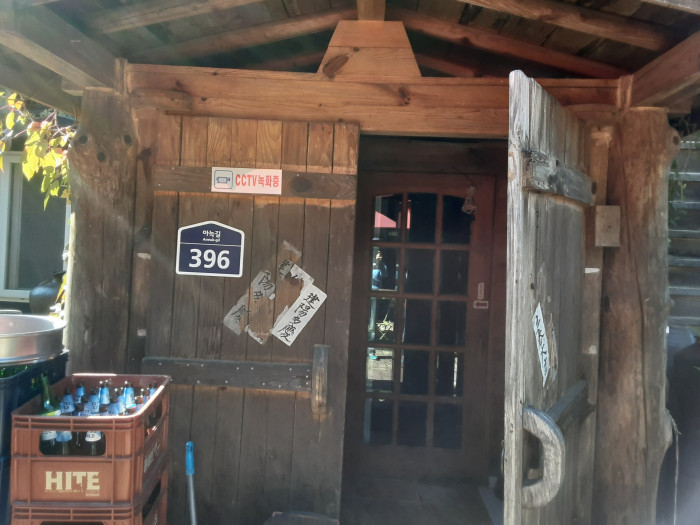
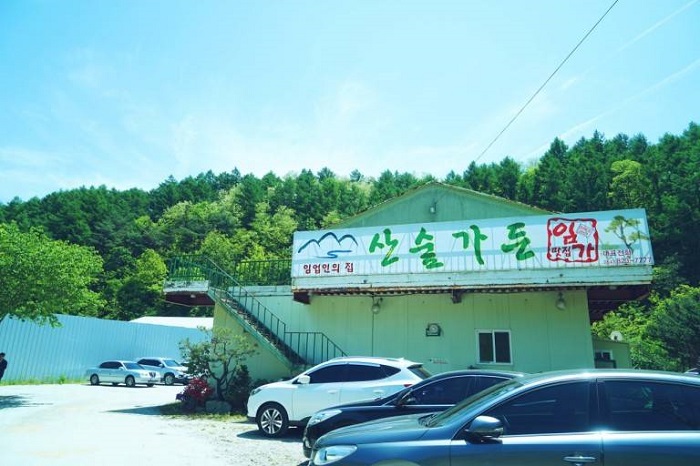
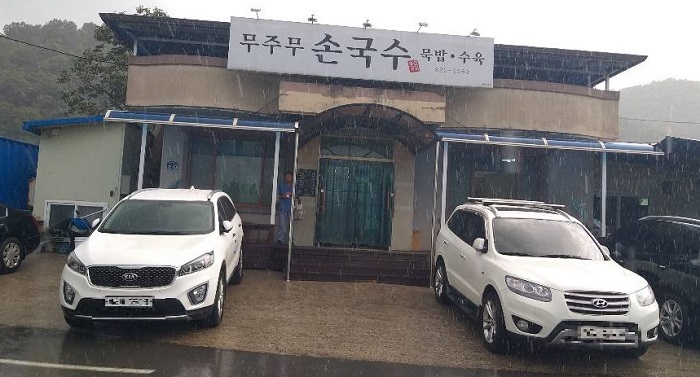
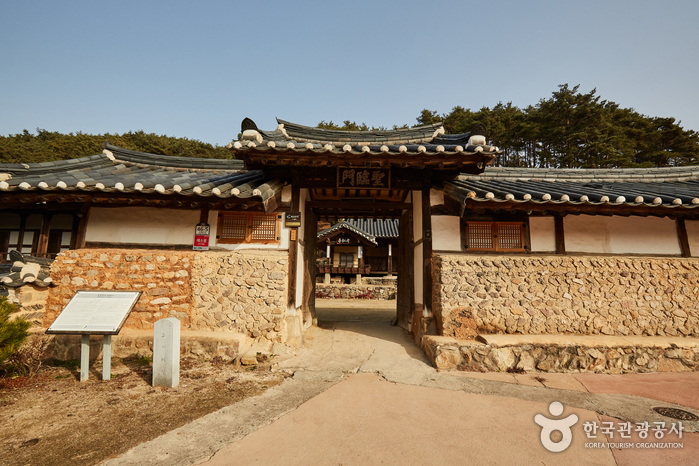
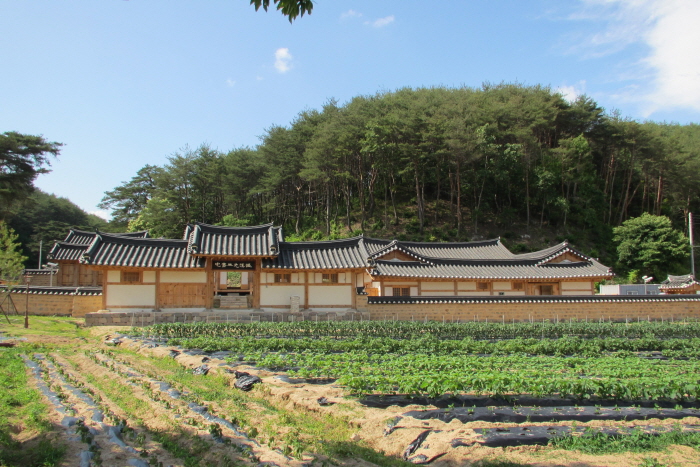
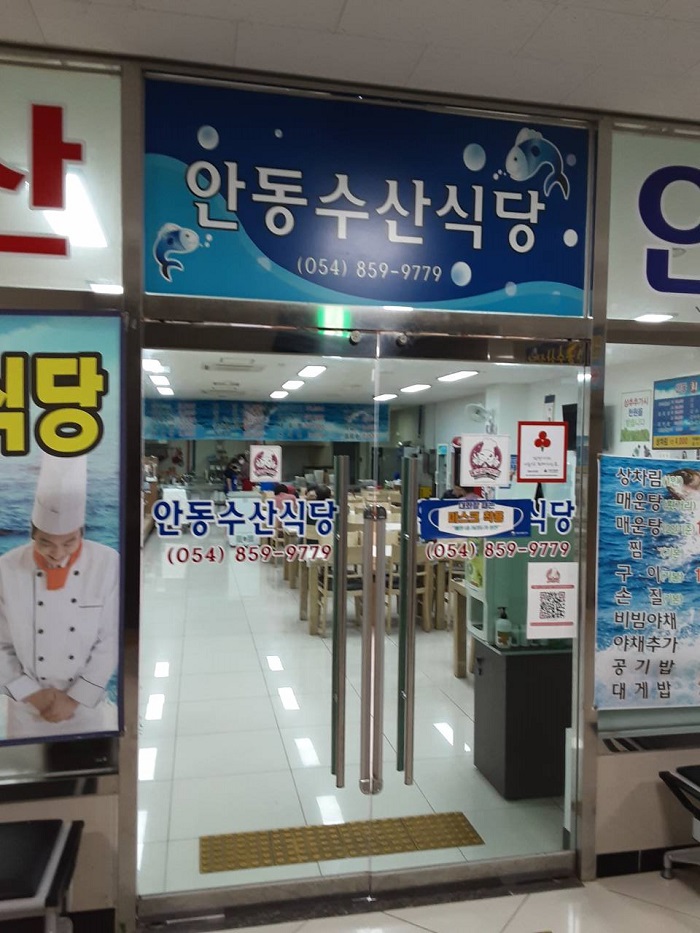

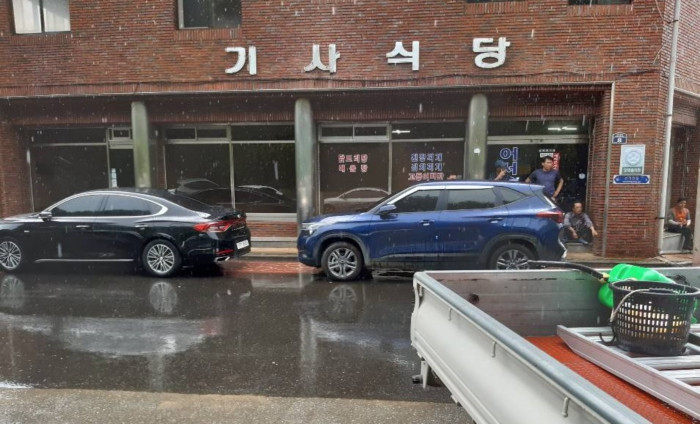
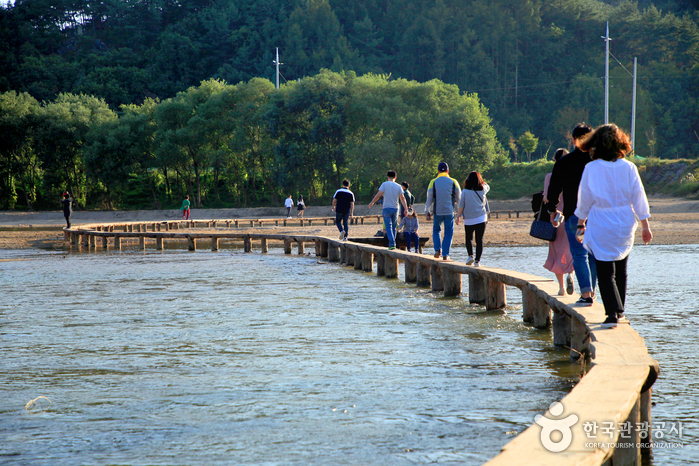
![Jeongjae Head House [Korea Quality] / 정재종택 [한국관광 품질인증]](http://tong.visitkorea.or.kr/cms/resource/96/2579496_image2_1.jpg)
 Français
Français
 한국어
한국어 English
English 日本語
日本語 中文(简体)
中文(简体) Deutsch
Deutsch Español
Español Русский
Русский